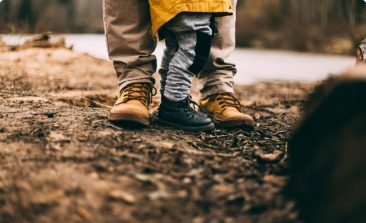Description
Between 4-6 months of age, significant development occurs. That’s because the left and right sides of the brain are now “conversing,” as it were. Your infant may start to pass a toy from one hand to the other or rock back and forth while moving the arms and legs together in preparation for crawling. Babies are learning how to engage with their environment at this age. Your infant may cry, fidget, or squeak to seek your attention. Babies who are lying on their bellies may utilise their newly acquired power to lift up their arms to get a better view of the room.
How much will my 4 to 6-month-old baby grow?
While all babies can grow at different rates, the following shows the average for boys and girls aged 4 to 6 months:
1. Weight: Average gain of 1 to 1¼ pounds per month; after 4 to 5 months the birth weight has doubled
2. Height: average growth of ½ to 1 inch per month
3. Head Size: average growth of about ½ inch per month
What can my baby do at this age?
This age is very social and babies move much more purposefully. While babies can progress at different rates, the following are some of the most common milestones your baby may reach in this age group:
1. Grasping, more, root, and tonic neck reflexes (reflexes normally present in young infants) disappear
2. Head well balanced
3. Sits propped up, back is rounded
4. Begins to support the body with legs when held standing
5. Roll back to front and front to back by 6 months
6. Moves object from one hand to the other
7. Grips feet and toes when lying on back
8. Makes “swimming” movements with arms and legs when placed on stomach
9. Begins to drool (not always a sign of teething)
10. Get one to three hours of sleep two to three times a day (on average)
11. Begins to sleep longer at night (six to eight hours continuously)
12. Has full-colour vision and is able to see at greater distances
Why is touch important for development at 4 to 6 months of age?
Babies learn about the world through touch. When you cuddle or kiss your baby, your baby learns that they are safe, secure and loved.
The opportunities to train your baby’s sense of touch at this age are endless, even on a normal day. Your baby will enjoy toys and books with different textures. Let your baby safely explore the surroundings. See if your baby likes to touch the silky edge of a baby blanket or feel the texture of a rug.
How long should my 4 to 6-month-old baby sleep?
By this age, your baby should be well on his way to establishing a regular sleep pattern. Some infants, particularly those who are breastfed, may still wake up during the night, but most no longer need to be fed in the middle of the night.
Most babies this age should sleep 12-16 hours a day, which includes longer nights of sleep and at least 2 naps a day, says the National Sleep Foundation. The average daytime sleep time today is around 3-4 hours. By 6 months, most babies sleep 9 hours or more at night, with brief awakenings.
You might also like
Parenting Updates: Subscribe Now!

ALL UPDATES
Go from pregnancy to adolescents with our email bulletins, loaded with reasonable, modern data about bringing up youngsters and taking care of yourself as a parent.
SUBSCRIBE NOW
MOVIE REVIEWS
Find the best motion pictures for your family with our youngster amicable surveys. Search new deliveries and more seasoned motion pictures by age, rating and type.
SUBSCRIBE NOW
MENTAL HEALTH RESOURCES
Is it safe to say that you are an expert working with families? Get data about kid, adolescent and parent psychological well-being and prosperity.
SUBSCRIBE NOW











































